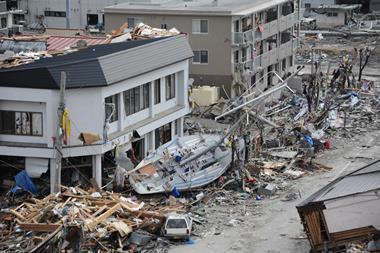Robin Wilkinson believes that modelling what must go right rather than what could go wrong can help in analysing risk.
In a perfect business world, the end result of everything would be predictable, fixed, and transparent. In reality, it is not. Many factors contribute to the outcome of any situation. Like the time traveller who journeys into the past and unwittingly changes the course of the future through a seemingly innocuous act, the end result of any business situation will be decided in part by influences which may be difficult to identify and even harder to make sense of.
An unpredictable roulette effect compounds the uncertainty. Various risks will each have different impacts at different times, and under different conditions. For example, while a major factory fire will always be problematic, it maybe less so at certain points in a manufacturing cycle, or more so if it occurs when other production facilities are closed for refurbishment.
Too often, risk managers are asked to spend their time on preventing only predictable problems, rather than helping organisations achieve their strategic goals. But, with multiple risks affecting every organisation's performance, risk management is arguably among the most important elements of corporate performance. Corporations expect their risk management resource to reduce obvious perils, such as the likelihood of fire, and to develop measures to mitigate any resulting losses. However, an equally important use of that resource could be examination of strategic goals, identification of obstacles to their achievement, and assessment of the importance of minimising or circumventing those obstacles.
A new, visual modelling system is designed to help risk managers work towards achieving strategic corporate goals. The Risk Analysis Tool allows risk managers to identify and assess the key factors that could affect a given outcome. It then translates those factors into a financial impact. Calculating the effect of multiple factors across the entire organisation identifies those factors which, singly or in combination, pose the greatest threat to desired business outcomes. Risk managers can then manage their resources with these greatest perils in mind.
Defining objectives
The system is based on the science of dependency modelling and uses Boolean logic. It works the opposite way round to other risk management tools. Rather than attempting arbitrarily to isolate what could go wrong, it is based on a model of those things which must go right to achieve a desired outcome.
First, the critical factors which must go right are identified and set out. Next, the software calculates and shows the effect of each risk factor - those things that could go wrong - either singly, or in their various possible combinations. It shows possible outcomes graphically, rather than in the conventional spreadsheet.
At its core, the tool considers possibilities and relationships, allowing meaningful analyses to be carried out, even when data is incomplete. For example, a goal for a lessor of medical equipment maybe that the future demand for a specific piece of equipment matches the currently estimated demand. Shortage of spares, the development of new treatments, or a change in the secondary lease policy of the primary lessees, could all reduce the demand. The risk model takes into account over 100 factors which could variously affect the likelihood and severity of different events.
Building each model involves including everything thai needs to go right at each level, beginning with a quantifiable objective on the left of the diagram. Branching out tc the right are sub-goals which lead to the main goal. Branches end when the model reaches an uncontrollable factor - something that must go right if the goal is to be achieved, but that is beyond the control of the organisation. The effect of most uncontrollables can be mitigated through countermeasures.
To complete the model, each uncontrollable factor and each countermeasure is assigned a failure rate. Costs can also be assigned. The software calculates the probability of failure of each item, from right to left. If a small changi in the values attached to an uncontrollable event leads to a large change in the overall residual value, high sensitivity to a specific event has been identified. The model can also measure the compounded effect of multiple failures.
Risk managers can use the system to consider and assess different mitigation procedures by running "what if models. System interfaces can be developed which linl to existing databases, to collect information for the model.
Of course, the model cannot eliminate risk. However, i is effective in determining the relative importance of vari ous risks, both on their own and in combination. The risl manager can thereby identify the high-sensitivity areas ir greatest need of risk control.
--
Robin Wilkinson is product development director at Arium Risk Architecture. The Risk Analysis Tool is a software solution developed by Arium Technology.



















